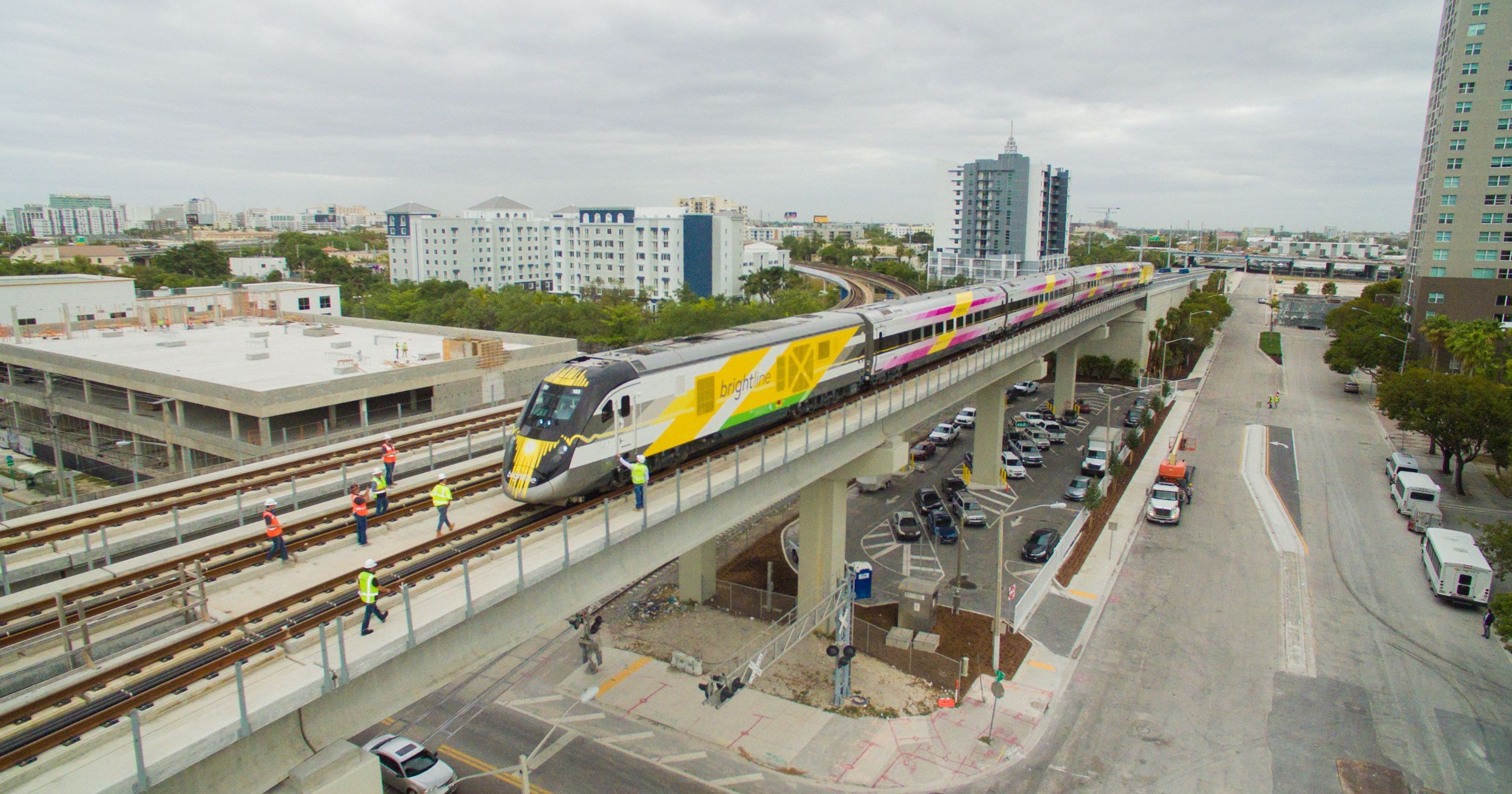
Brightline is getting ready to ask for state and federal permission to raise another $1 billion though tax-exempt, private activity bonds to finish and improve its Miami to Orlando high-speed passenger train route now under construction.
There might be a $20 million problem in the proposal, however, based on some reactions it drew Wednesday at a Florida Development Finance Corp. Board of Directors meeting.
Brightline Holdings, the parent company of the private high-speed passenger train operator, provided a pre-request briefing Wednesday to the board. Brightline officials essentially assured the board that all is going well with development of the high-speed rail (despite losing 18 months of operations to the coronavirus crisis). They advised that it now is time for the company to finance the last $1 billion or so of construction.
The final financing package would provide capital to finish construction currently underway of new railroad tracks from Orlando International Airport to Cocoa; completion of double-tracking and track improvements from Cocoa to West Palm Beach; additional tracking in the West Palm Beach to Miami corridor; and new in-line stations in Boca Raton and Aventura.
Together with Brightline’s two previous rounds of private activity bonds, the latest package would bring Brightline’s private activity bond financing to $3.7 billion, and its total investment in the rail project to around $6 billion.
Brightline still expects to finish the Orlando line by the end of 2022 and start carrying passengers between Orlando and South Florida in early 2023. Brightline expects to charge a $95 fare for the 235-mile Miami to Orlando ride, which company officials insist will be faster than cars, cheaper and more convenient than planes, and safer than either.
They expect the bonds to sell easily.
“Investors like our credit because we have a one-of-a-kind, irreplaceable, permanent infrastructure package in one of America’s best travel markets,” said Brightline Chief Financial Officer Jeff Swiatek.
Wednesday’s meeting was not a formal hearing because Brightline was not yet making its formal request for state approval to seek federal authorization to sell private activity bonds. That request could come as soon as next month.
The briefing Brightline offered Wednesday drew what sounded like widespread support, praise, and statements of appreciation from board members and others.
Strong support was offered Wednesday only for the route from Miami to Orlando. Nearly all of the capital Brightline wants to finance would be for that route. No one offered any objections or concerns about private activity bonds being used for that route. Everyone seemed to like the idea.
However — buried within line-item details of the proposal, as outlined Wednesday by Swiatek and Brightline Holdings Chief Executive Officer Mike Reininger, was a small allocation, $20 million, for planning of the company’s next big venture, a proposed high-speed rail line connecting Orlando International Airport to Tampa.
That Orlando to Tampa proposal includes a segment that would go from the Orlando airport down State Road 417 to a stop at Walt Disney World. Brightline currently has that route before federal authorities for a National Environmental Policy Act review.
It was that SR 417 segment that brought out the daggers Wednesday.
Numerous speakers representing Universal Orlando, the International Drive Resort Area Chamber of Commerce and various other International Drive-area interests expressed astonishment, skepticism, even anger that Brightline would go that way, instead of down State Road 528, with am International Drive-area stop, maybe the Orange County Convention Center. Many of the speakers represented a group called Orlando’s RightRail coalition, which is fighting the Disney route plan.
For those who remember the heated political battles over the previous high-speed rail plan in the 2000s — and many of the Orlando’s RightRail players are veterans of that conflict — the Disney-only route versus an International Drive-stop alternative would be recalled as one of the hottest disputes.
That hasn’t changed.
“We do want that line to be successful from Miami to Orlando. In fact, in front of this august body, I had my CFO stand up and testify in support. So imagine our surprise when the new president of Brightline comes in and says they’re just going to bypass us after we’ve been working with them,” said John McReynolds, senior vice president of external affairs for Universal Parks & Resorts.
The $20 million in Brightline’s new financing proposal isn’t even for the Disney segment, said Ben Porritt, Brightline’s senior vice president for corporate affairs. It’s to study the Interstate 4 segment in the Disney to Tampa route, a study that would be good whether the train goes to International Drive or not, he said.
But the $20 million — which McReynolds described as a nugget buried in the broader proposal — opened the old wound.
Orlando’s RightRail speakers recalled the reasons why the state’s High Speed Rail Commission had settled on the International Drive route over the Disney route in 2010. They cited serious environmental impact concerns along SR 417. They also expressed hope that a Brightline hub on International Drive could solve all sorts of transportation problems in Orlando, and provide ridership for the company.
Marc Reicher, representing Hilton Orlando and some of the other RightRail coalition representatives insisted Brightline is misleading itself and authorities if it thinks it can get federal environmental approval for the SR 417 route in just a year or two, if ever.
He and others warned that even $20 million — 2% of Brightline’s proposed new financing package, barely more than a rounding error — is enough spending on something they oppose to make the whole package inappropriate for tax-exempt bonds in their view.
“I think it is a huge mistake,” Reicher said. “It seems to me if we are going to issue public advancement bonds we should be looking at the public. We should be joining together as a community.”




One comment
IDrive Orlando
November 4, 2021 at 7:24 pm
It needs to come to IDRIVE!
Comments are closed.